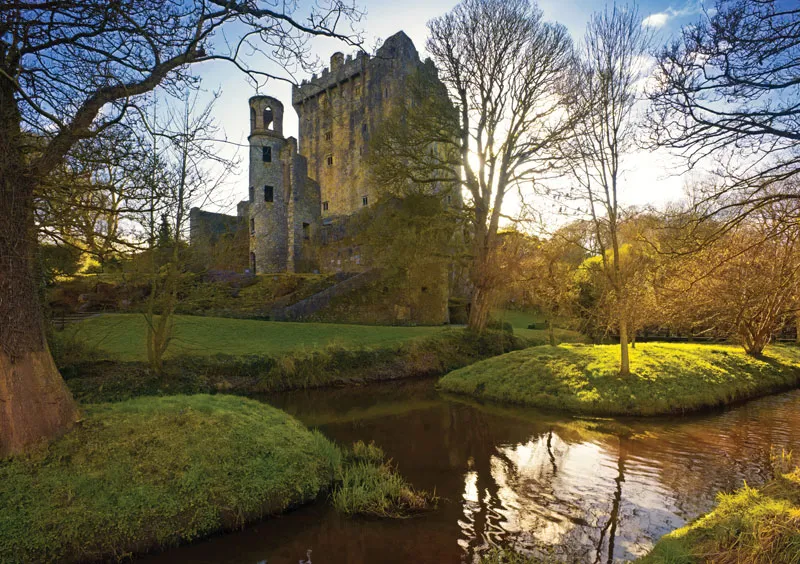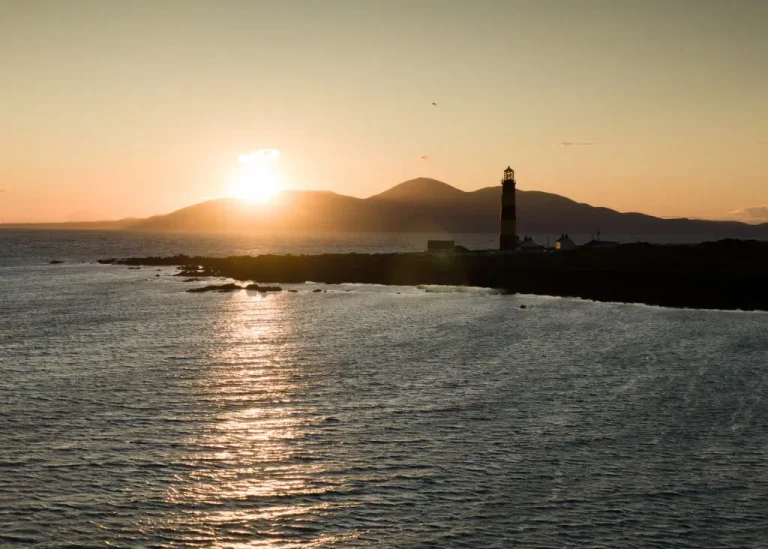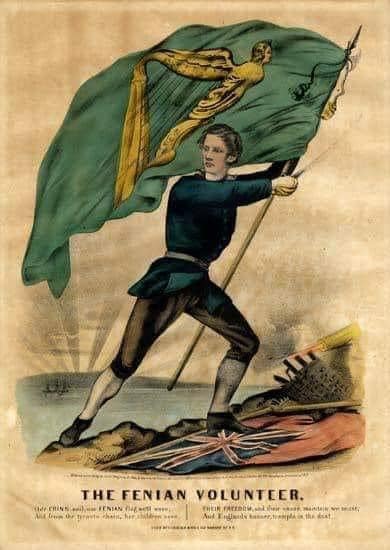

Ah, Cork! The very name conjures images of rolling green hills, a rugged coastline kissed by the Atlantic, and a spirit as independent as its people. Known affectionately as “The Rebel County,” Cork boasts a rich tapestry of history, innovation, and unique quirks. Whether you have Cork roots or are simply dreaming of a future trip to Ireland, it’s time to brush up on your knowledge. You might be surprised by what you discover!
Did you know, for instance, that the first potato planted in Ireland likely took root in Cork soil? Or that a Cork town was home to Europe’s very first Temperance Society? These are just a few of the captivating stories woven into the fabric of this remarkable county.
While we could easily delve into 100 facts about County Cork, or even tailor some facts about County Cork for kids, let’s start with a curated list of 11 fascinating tidbits that might just blow your mind. And if you know of any other intriguing facts about Cork that we’ve missed, be sure to share them in the comments below!
Here are 11 facts that we’ve found that we are sure will blow your mind.
-
The First Potato in Ireland Found Fertile Ground in Cork: Sir Walter Raleigh, credited with introducing the potato to Ireland from the Americas, is said to have planted the very first spuds near his home in Youghal, around 1588. Talk about humble beginnings for a national staple!
-
Ireland’s Only Cable Car Braves the West Cork Waves: The Dursey Island Cable Car, clinging to the dramatic Beara Peninsula, is not only Ireland’s sole cable car but also the only one in Europe that traverses open seawater. A truly unique journey connecting the mainland to the tranquil island.
Musicians at a set dancing session on Dursey Island.
-
The Royal Cork Yacht Club Sails Through History as the World’s Oldest: Founded on Haulbowline Island in 1720, this Crosshaven institution proudly claims the title of the oldest yacht club in the world. A testament to Cork’s deep connection with the sea.
-
Skibbereen Pioneered Europe’s Temperance Movement: The West Cork town of Skibbereen made history as the birthplace of Europe’s first Temperance Society in 1833. This group championed abstinence from alcohol, reflecting a fascinating aspect of social history in the region.
-
Cobh Rings Out with Ireland and the UK’s Largest Carillon Bells: The magnificent St. Colman’s Cathedral in Cobh houses the largest set of Carillon Bells in both Ireland and the UK, boasting an impressive 49 bells. Their melodious chimes are a signature sound of this historic port town.
Cobh Ramblers well maintained St Colman’s Park
-
Cobh Hosted the World’s First Motorboat Race: County Cork holds another significant maritime milestone. The very first international award for motorboat racing, the Harmsworth Cup, took place in Cobh in 1903. A thrilling start to a global sporting tradition!
-
Cork Once Reigned Supreme in the Butter Market: Believe it or not, during the 18th century, Cork was the epicenter of the global butter trade, boasting the largest butter market in the world. A testament to the agricultural richness of the region.
-
A Cork Town Witnessed the Dawn of Transatlantic Steam Travel: The SS Sirius embarked on its maiden voyage across the Atlantic to New York from Cobh in April 1838, marking a pivotal moment in maritime history. However, fate would have it that this pioneering vessel would later sink off the coast of Ballycotton in East Cork.
Ballydehob makes front page of Wall Street Journal for the most unique of events
-
Ellis Island’s First Documented Immigrant Hailed from Cork: Annie Moore, a young woman from Shandon in Cork City, holds the distinction of being the first documented immigrant to pass through Ellis Island in New York Bay. Her arrival aboard the SS Nevada marked the beginning of a new chapter for countless individuals seeking a new life in America.
-
Glanworth’s Bridge Stands as Europe’s Oldest and Narrowest: In the charming village of Glanworth, just a stone’s throw from Fermoy, lies a remarkable 13-arch bridge built in the 15th century. This ancient structure is recognized as the narrowest and oldest public bridge in everyday use in Europe.
-
A Doneraile Native Broke Barriers as the First Recorded Female Freemason: Elizabeth Aldworth (née St Leger), born in Doneraile, carved her place in history as the first recorded woman to be initiated into the Freemasons in the early 18th century. Her father was the 1st Viscount Doneraile.
Frequently Asked Questions About Cork:
What are some fun facts about Cork?
Beyond the eleven listed above, here are a few more fun facts about Cork:
- Cork is home to Fota Wildlife Park, where animals roam freely in a spacious environment.
- The English Market in Cork City is a vibrant Victorian-era covered market offering a wide array of local produce and delicacies.
- West Cork is renowned for its stunning coastline, dotted with picturesque villages and islands.
What is County Cork known for?
County Cork is known for its:
- Rich history and rebellious spirit: Hence the nickname “The Rebel County.”
- Beautiful and diverse landscapes: From rugged coastlines to rolling hills and fertile farmland.
- Vibrant culinary scene: Cork boasts excellent local produce and a thriving food culture.
- Historic towns and villages: Each with its own unique character and charm.
- Strong sporting traditions: Particularly in Gaelic games like hurling and Gaelic football.
How old is County Cork?
The history of settlement and organization in the area that now constitutes County Cork stretches back millennia. While it’s difficult to pinpoint an exact “age” in the way we might for a city, the region has been inhabited and played a significant role in Irish history for well over a thousand years, with established kingdoms and territories existing long before the formal establishment of counties.
What is Cork City famous for?
Cork City is famous for:
- Its lively atmosphere and friendly locals.
- Historic landmarks like St. Fin Barre’s Cathedral and the Shandon Bells.
- Its thriving arts and culture scene.
- Being a university city, home to University College Cork (UCC).
- Its location on the River Lee, with many of its main streets built over covered-up river channels.
What is special about Cork?
What makes Cork special is its unique blend of:
- Independent spirit: The “Rebel County” moniker reflects a history of standing apart.
- Natural beauty: A diverse landscape offering something for everyone.
- Strong sense of local identity: “Being from Cork” is a point of pride for many.
- Rich cultural heritage: From ancient sites to vibrant modern arts.
What is the nickname of Cork?
The primary nickname of Cork is “The Rebel County.”
Why was Cork called Cork?
The name “Cork” comes from the Irish word “Corcaigh,” which means “marshy place.” This refers to the marshy terrain on which the original settlement and later Cork City were built, particularly around the River Lee.
What food is Cork known for?
Cork is known for a variety of local foods, including:
- Drisheen: A type of blood sausage, a local delicacy.
- Skirts and kidneys: Another traditional dish.
- Seafood: Given its extensive coastline, fresh seafood is abundant.
- Artisan cheeses: County Cork has a thriving artisan cheese-making tradition.
- Craft beers and ciders: A growing number of local producers.
What are some fun facts about cork trees?
It seems there might be a slight confusion here! While County Cork is famous, it’s not particularly known for cork trees in the botanical sense. Cork trees (Quercus suber) are primarily found in the Mediterranean region, especially Portugal and Spain, and are the source of commercial cork used for wine stoppers and other products. Perhaps the similarity in name is the connection!
What sport is Cork known for?
Cork is particularly known for its strong traditions in Gaelic games:
- Hurling: Cork has a passionate following and a successful history in this ancient Gaelic sport.
- Gaelic Football: Another popular and fiercely contested sport in the county.
Rugby and soccer also have a significant presence in Cork.
What is the motto of Cork City?
The motto on the coat of arms of Cork City is “Statio Bene Fide Carinis,” which is Latin for “A Safe Harbor for Ships.” This reflects the city’s historical and ongoing importance as a port.
Who first discovered Cork?
The establishment and growth of Cork were a gradual process rather than a single “discovery.” The area was inhabited in prehistoric times, and later saw the influence of early Christian settlements and Viking invasions. St. Fin Barre is traditionally credited with founding a monastic settlement in the 7th century, which grew into the city of Cork.
What are people from Cork called?
People from Cork are called Corkonians.
While this article provides a glimpse into the fascinating world of County Cork, there are countless more stories waiting to be uncovered. The families of County Cork, Ireland, have contributed significantly to its rich history and cultural tapestry. Exploring county Cork, Ireland surnames can even offer insights into ancestral roots for some. It’s important to remember that Cork is part of the Republic of Ireland and a member of the European Union, not the UK. The population of Cork city and county reflects a vibrant and dynamic community. So, whether you’re planning a visit or simply curious, County Cork promises a journey of discovery filled with captivating facts and unforgettable experiences.



